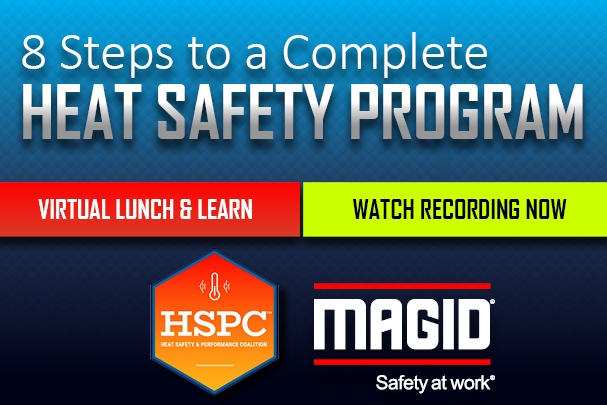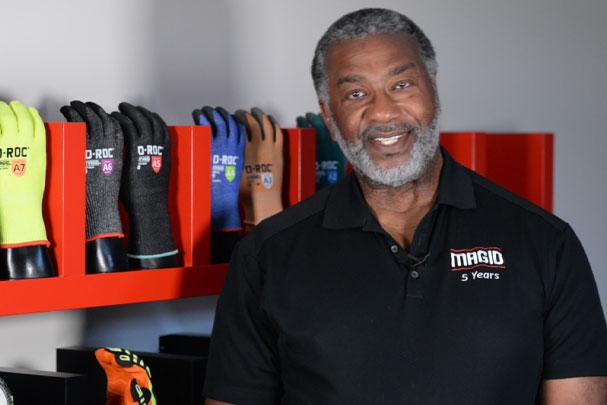
Heat Stroke Treatment for Remote Locations
A good taco can really hit the spot when you’re hungry, but did you know a different kind of TACO can save a life? Of course, we’re not talking about a delicious tortilla-based meal. We’re talking about the Tarp Assisted Cooling Oscillation method of treating a heat stroke sufferer in the field.
 |
An industrial plant or jobsite that is properly equipped to treat heat stroke includes at least one full-body immersion tub that can be filled with water and ice to immerse a heat stroke sufferer. But for jobs that are mobile, like road or remote construction or repair, it can be impossible to bring something so large along for the ride. Unfortunately, this kind of remote work might actually be more susceptible to heat stroke incidents as the work tends to be done outdoors, under the hot sun.
Why Use Full Body Immersion to Treat Heat Stroke?
You may be tempted to ask…why do we need this? Why can’t we just get the sufferer into the air conditioning or cover them with cold towels? The answer is that a true heat stroke is a full body, medical emergency. Cooling the skin or ingesting cool liquids alone will not save your worker from the truly devastating effects of a heat stroke. When body temperature rises to the point of a heat stroke, the sufferer can show symptoms that may include:
|
|
If you suspect heat stroke, it's better to err on the side of caution and treat for heat stroke since any of these these symptoms can be an indication that damage is happening at the cellular level. That means damage to the heart, liver, kidneys, brain, or even disintegration of muscle tissue is all possible and can result in permanent damage to these areas or even death if the person’s body temperature isn’t lowered within 30 minutes. Remember that this damage can even happen in an air-conditioned ambulance as a person is transported to the hospital. This is the root of the Cool First, Transport Second protocol.
Assign someone to contact emergency services so professional help is on the way. |
|
|
How to Treat Heat Stroke with a Full Body Immersion Tub
Heat safety experts at the Korey Stringer Institute and the Heat Safety & Performance Coalition (HSPC) teach us that the best way to treat a heat stroke is through cold water immersion.
- Call 911 to get EMS on the way.
- Place the tub in a shaded or cool area and fill it halfway with cool water and ice.
- Remove the victim’s excess clothing and equipment.
- Place them in the tub.
- Cover the person to mid-chest or neck with additional water and ice.
- Continually add and circulate cool water and ice. Never leave the victim alone to ensure they don’t slip below the water’s surface.
- Monitor the person’s vital signs like heart rate and breathing rate.
- After approximately 15 to 20 minutes, check to see if the sufferer is exhibiting any signs of hypothermia in case of misdiagnosis of heat stroke.
The TACO Method: Treating Heat Stroke with No Tub
The good news is that the items you need for the TACO method are typically available on just about any jobsite.
 A few workers willing to help |
 A large tarp |
|
 A source of water |
 Ice |
How to perform Tarp-Assisted Cooling Oscillation
- Call 911 to get EMS on the way.
- Remove the victim’s excess clothing and equipment.
- Place them in the middle of a tarp, which will serve as the makeshift tub.
- Have nearby workers pick up each corner of the tarp to form a sling, or taco shape.
- Cover the sufferer with cool water and ice up to their chest.
- Slowly move the tarp back and forth to oscillate the liquid and initiate cooling.
- Ensure the victim does not slip beneath the surface of the water and monitor their vital signs such as heart rate and breathing rate.
- After approximately 15 to 20 minutes, check to see if the sufferer is exhibiting any signs of hypothermia in case of misdiagnosis of heat stroke.
Of course, the best defense is a good offense, and heat illness of any severity is 100% preventable. So be sure you’ve implemented all 8 Simple Steps to Heat Safety on the Job to keep heat stroke treatment something you talk about, but never have to use!
Get more free tools and resources to combat heat illness at Magid’s Heat Illness Prevention HQ.
GIVE ME THE TOOLS!







